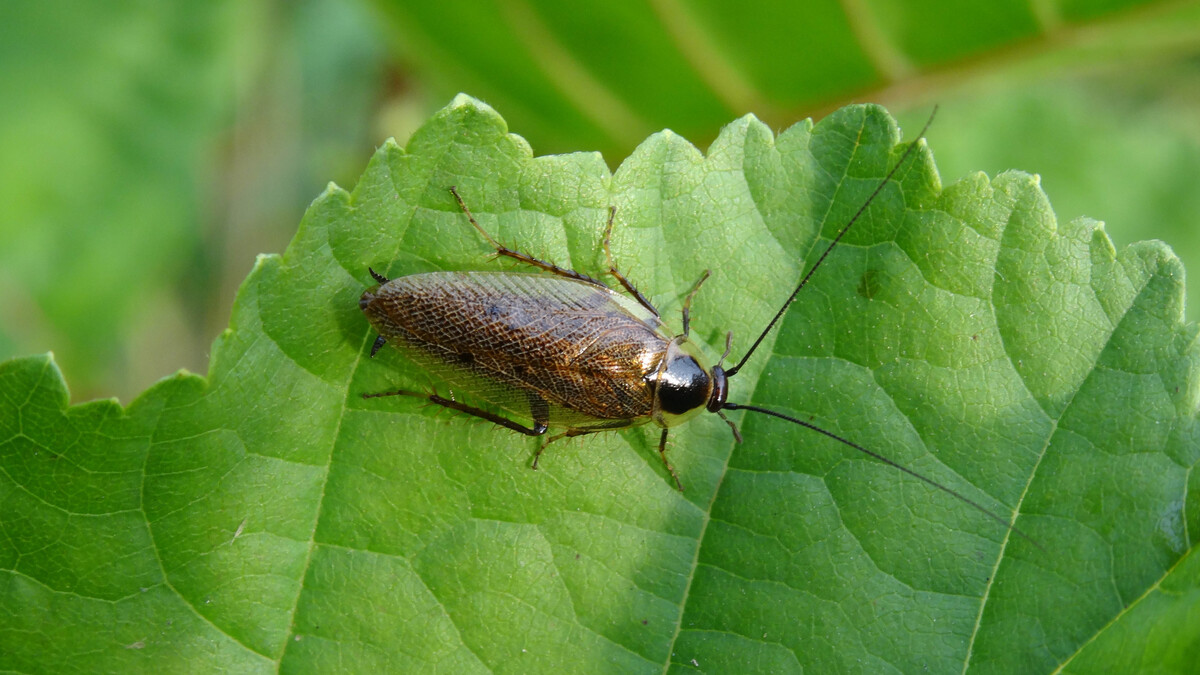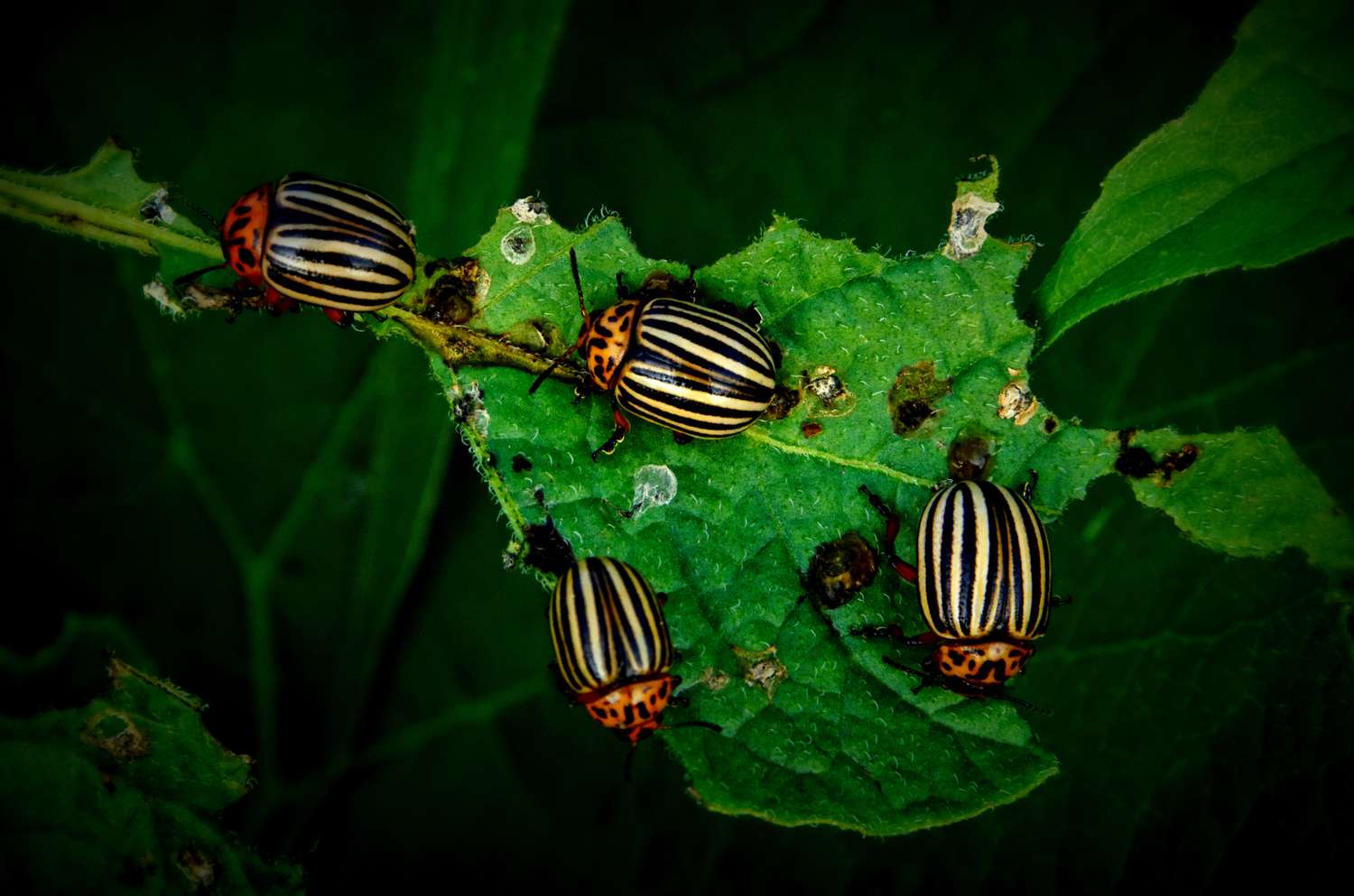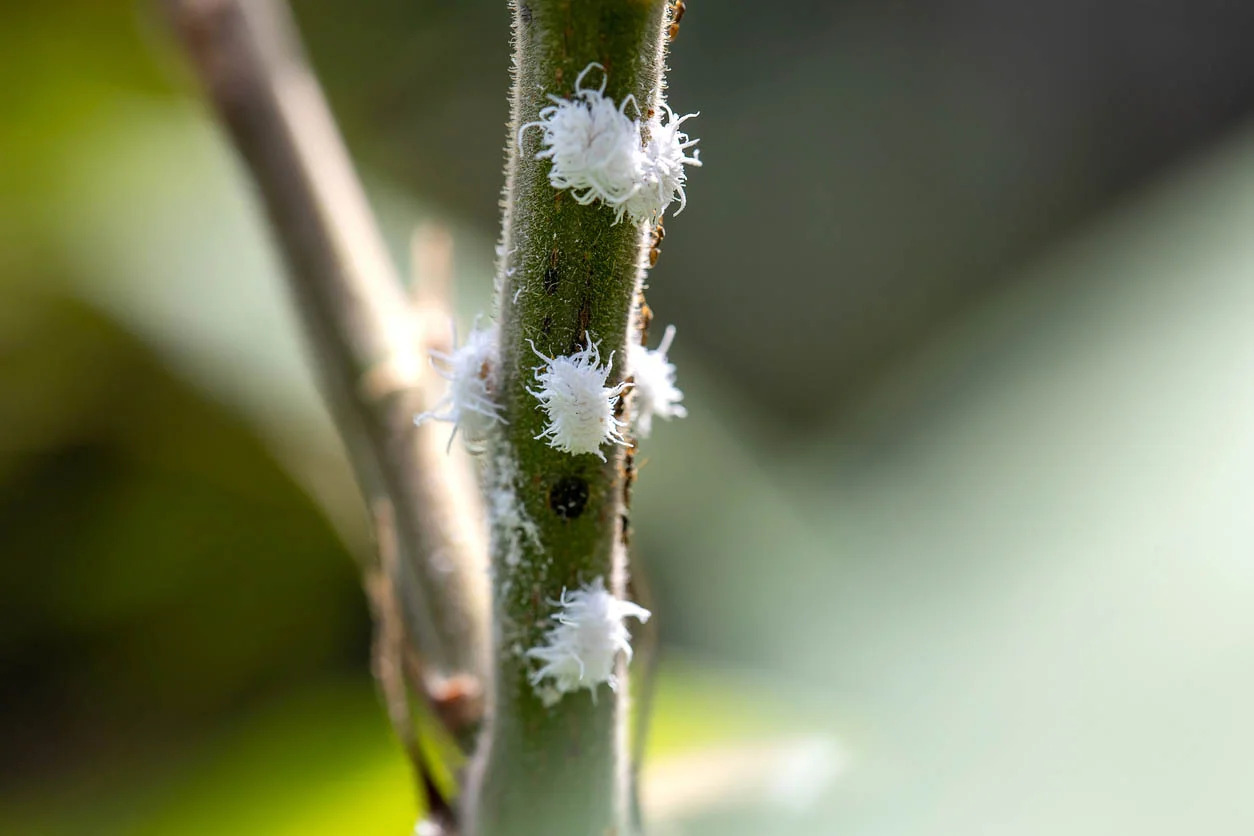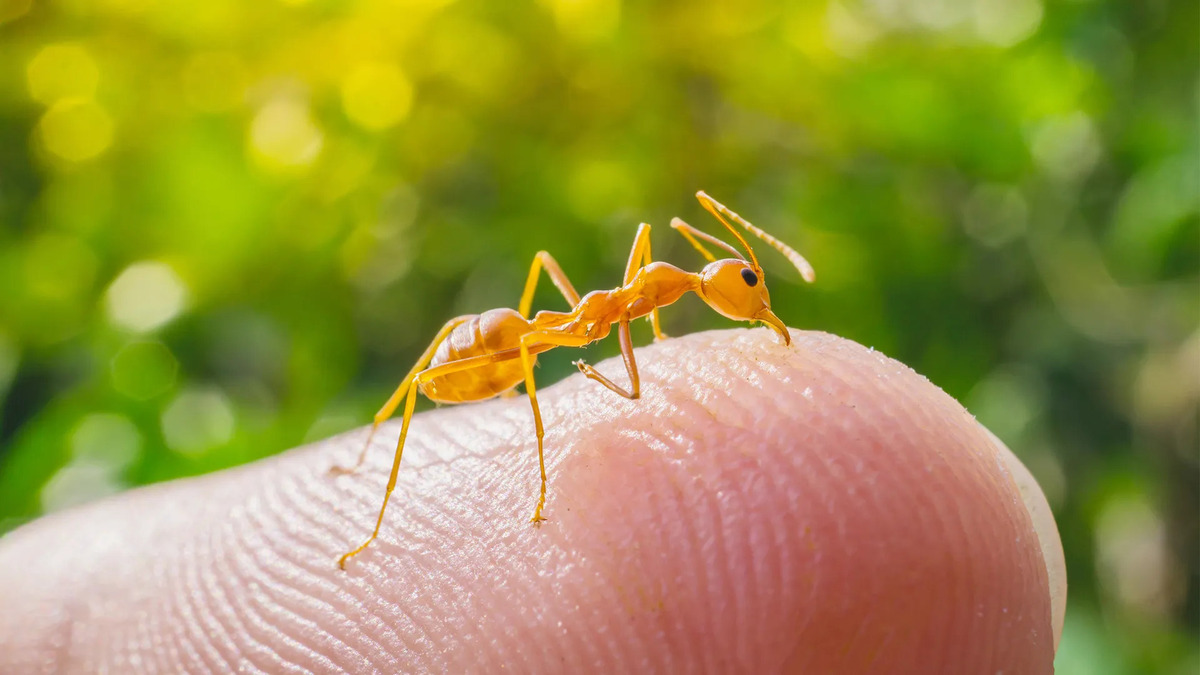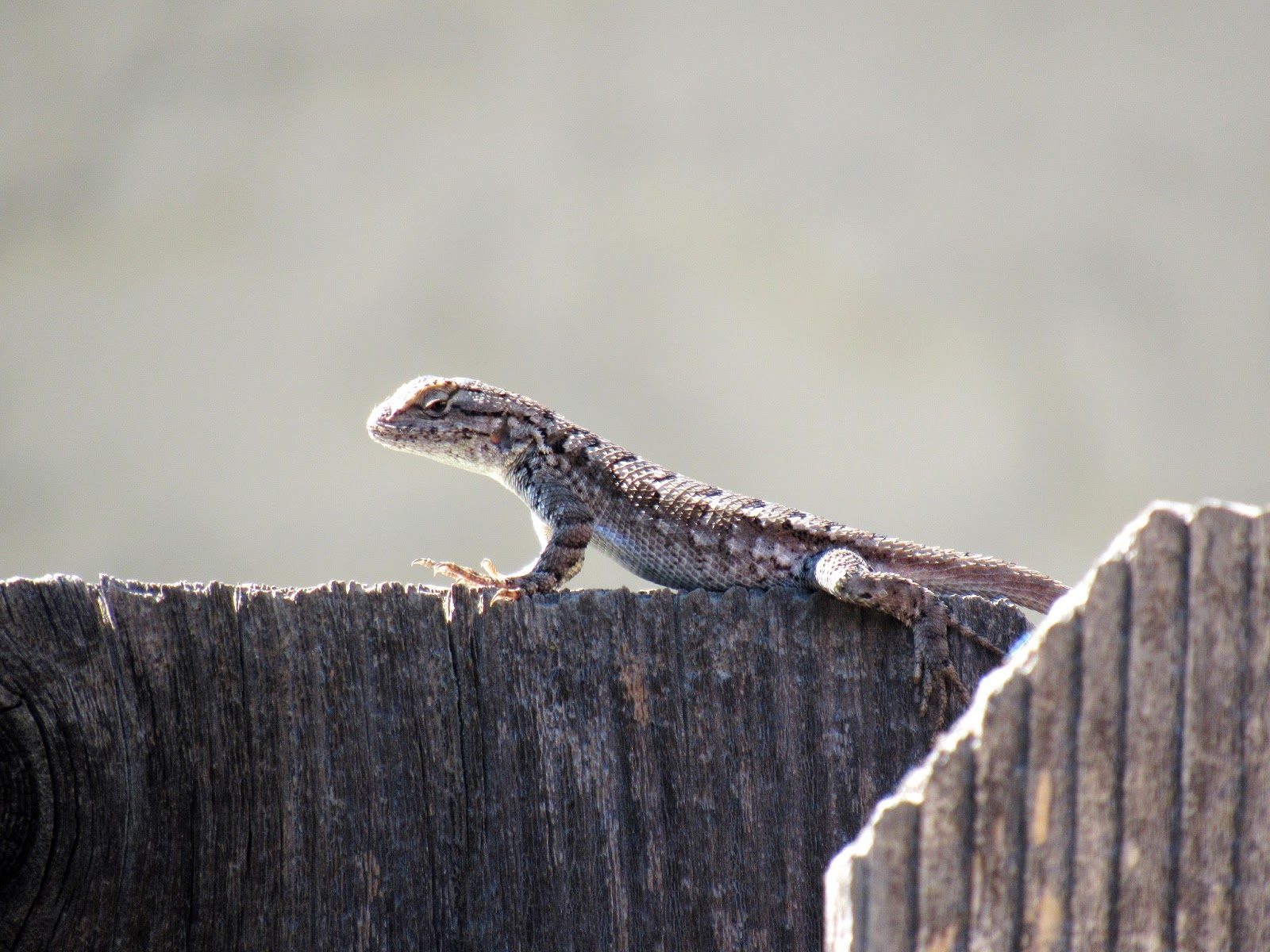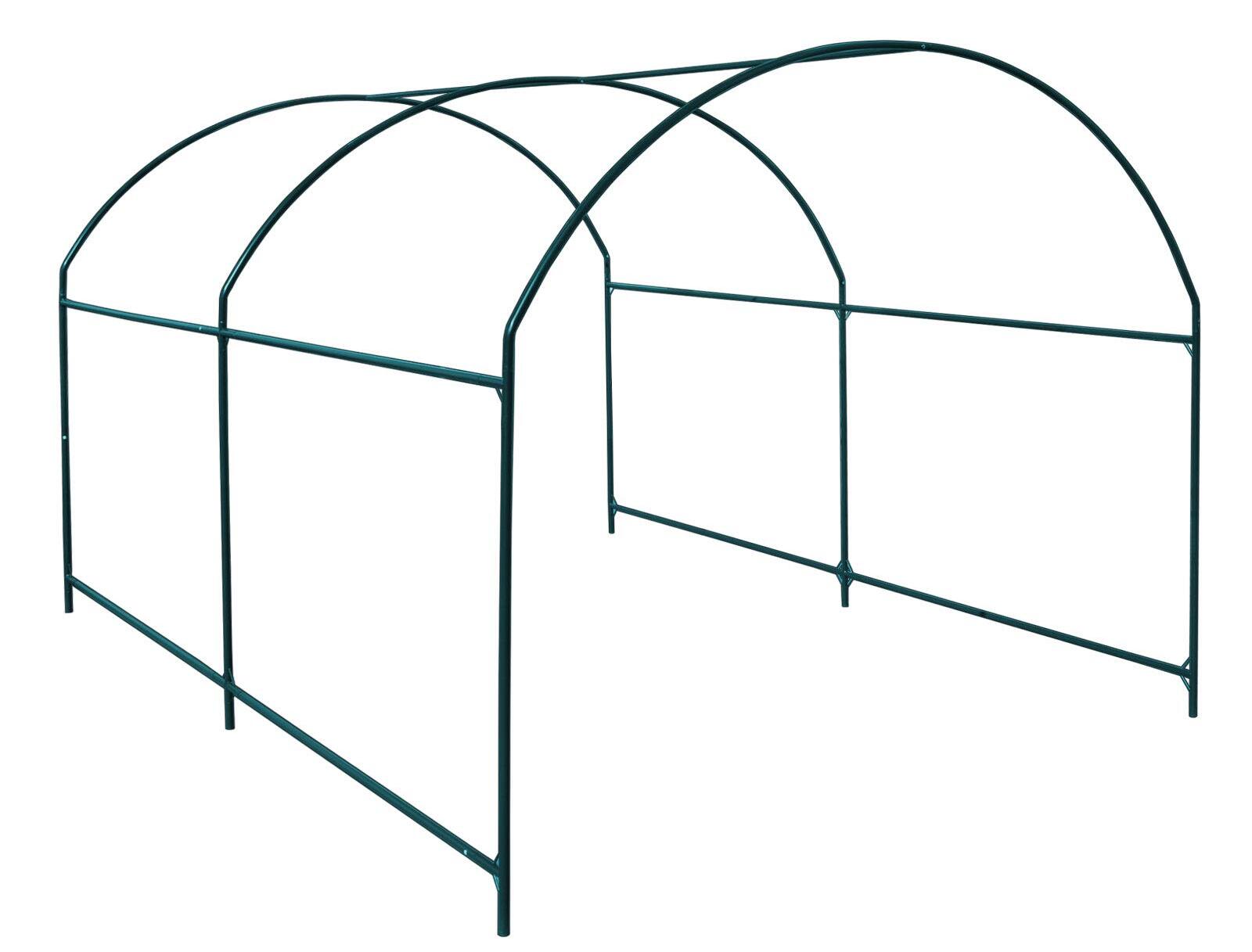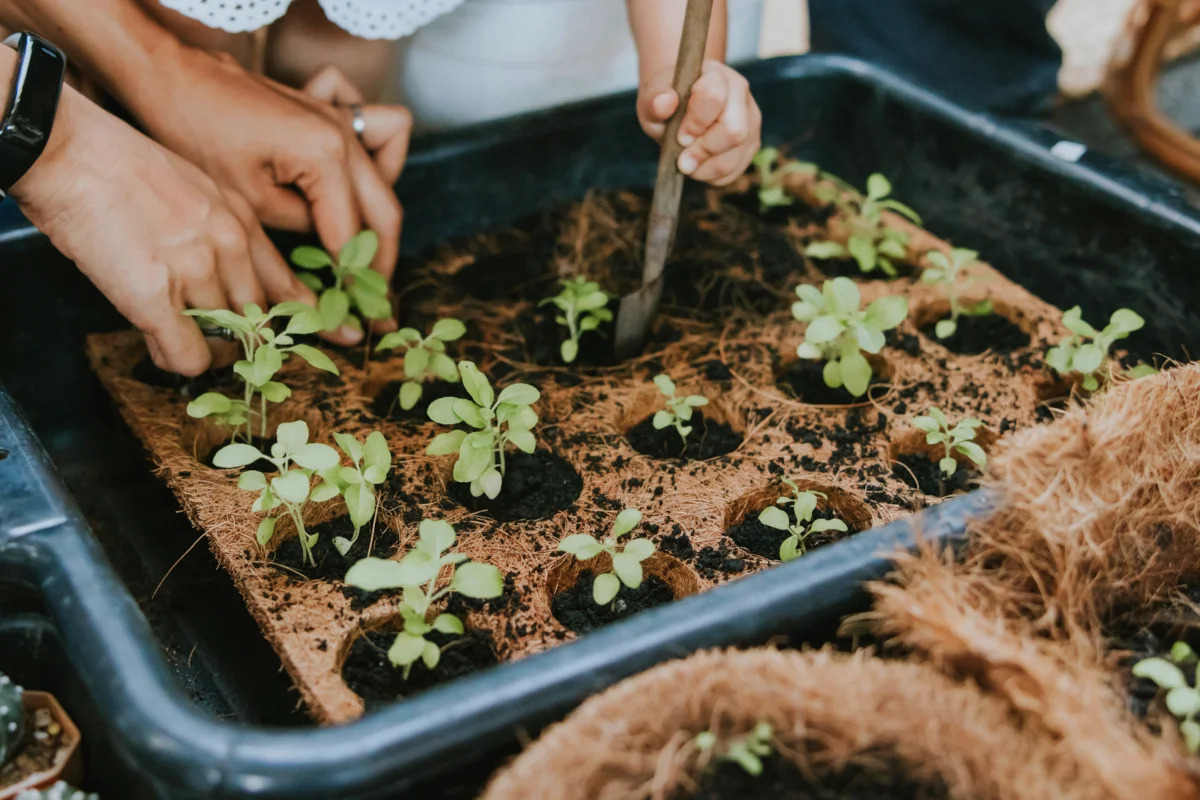Home>Gardening News and Trends>Latest News>Hemipteran Plant Feeding Insects Feed On What Part Of The Plant?


Latest News
Hemipteran Plant Feeding Insects Feed On What Part Of The Plant?
Published: December 9, 2023
Discover the latest news on Hemipteran plant feeding insects and learn which parts of the plant they feed on. Stay informed with our comprehensive updates.
(Many of the links in this article redirect to a specific reviewed product. Your purchase of these products through affiliate links helps to generate commission for Chicagolandgardening.com, at no extra cost. Learn more)
Table of Contents
- Introduction
- Overview of Hemipteran Plant Feeding Insects
- Feeding Behavior of Hemipteran Plant Feeding Insects
- Types of Hemipteran Plant Feeding Insects
- What Parts of the Plant are Targeted by Hemipteran Plant Feeding Insects?
- Factors That Influence the Choice of Feeding Sites for Hemipteran Plant Feeding Insects
- Impact of Hemipteran Plant Feeding Insects on Plants
- Management Strategies for Controlling Hemipteran Plant Feeding Insects
- Conclusion
Introduction
Hemipteran plant feeding insects, also known as phytophagous Hemiptera, are a diverse group of pests that have a significant impact on agricultural crops and ornamental plants. These insects belong to the order Hemiptera, which is one of the largest insect orders, comprising over 80,000 known species worldwide. They are commonly found in various habitats, including forests, grasslands, and agricultural fields.
The feeding behavior of Hemipteran plant feeding insects has fascinated scientists and researchers for many years. These insects have specialized mouthparts called stylets, which they use to pierce and suck plant tissues for obtaining nutrients. They can feed on a wide range of plant species, including vegetables, fruits, grains, and ornamental plants.
Understanding the feeding habits of Hemipteran plant feeding insects is crucial for developing effective management strategies to minimize crop damage and protect plant health. This article aims to provide an overview of Hemipteran plant feeding insects, their feeding behavior, the parts of the plant they target, and the factors that influence their feeding choices. Additionally, it will discuss the impact of these insects on plants and explore management strategies to control their populations.
Overview of Hemipteran Plant Feeding Insects
Hemipteran plant feeding insects, commonly known as plant bugs, are a diverse group of insects that belong to the order Hemiptera. This order includes a wide range of insects, such as aphids, scales, mealybugs, and leafhoppers, all of which have evolved to feed on plants and can cause significant damage to crops and ornamental plants. Hemipterans have piercing-sucking mouthparts, which they use to pierce plant tissues and feed on the sap that flows within.
One of the key characteristics of Hemipteran plant feeding insects is the presence of specialized mouthparts known as stylets. These stylets are needle-like structures that can be used to penetrate the plant’s surface and extract sap. They are often grouped into two main types: the mandibulate stylet and the haustellate stylet. The mandibulate stylet is characterized by having modified mandibles that can cut through plant tissues, while the haustellate stylet is composed of modified maxillary stylets that can pierce plant cells and extract sap.
These insects have adapted to a wide range of plant hosts, enabling them to survive and thrive in diverse ecosystems. They can be found feeding on leaves, stems, flowers, fruits, and even roots, depending on the species. Some Hemipteran plant feeding insects have a broad diet and can feed on multiple plant species, while others are specialized feeders that have developed specific relationships with certain host plants.
One of the most notable characteristics of Hemipteran plant feeding insects is their ability to transmit plant diseases. Many species, such as aphids and leafhoppers, can act as vectors for various plant pathogens, including viruses, bacteria, and phytoplasmas. These insects can acquire pathogens from infected plants and inject them into healthy plants while feeding. This ability to transmit diseases makes Hemipteran plant feeding insects a significant threat to agricultural crops, as they can contribute to the spread of devastating plant diseases.
Overall, Hemipteran plant feeding insects play a crucial role in ecosystems, but their feeding habits and ability to transmit diseases make them a challenge for farmers and gardeners. Understanding their biology, feeding behavior, and host preferences is essential for developing effective management strategies to minimize crop damage and protect plant health.
Feeding Behavior of Hemipteran Plant Feeding Insects
The feeding behavior of Hemipteran plant feeding insects is characterized by their ability to extract sap from plant tissues using their specialized stylets. These insects have evolved to exploit the phloem, xylem, and other plant tissues as a source of nutrients.
When Hemipteran plant feeding insects encounter a suitable host plant, they use their stylets to puncture the plant’s epidermis or other protective tissues. The stylets consist of several slender, flexible structures that allow the insects to navigate through the plant’s cells and tissues while minimizing damage. These modified mouthparts can penetrate the plant surface, bypassing cell walls to access the sap-rich tissues beneath.
Once the stylets have successfully breached the plant’s defenses, Hemipteran plant feeding insects begin a process known as probing. During probing, the insects explore the plant’s vascular system, searching for the desired sap-rich tissues. They carefully navigate through the plant, avoiding obstacles and selecting the most nutrient-rich areas to feed on.
Once a suitable feeding site is identified, the insects begin to ingest the sap through their stylets. Hemipteran plant feeding insects have a unique method of sap ingestion called the “stylet-sap uptake” mechanism. This mechanism allows them to extract sap while preventing excess fluid loss or contamination with plant cell contents.
Hemipteran plant feeding insects are well adapted to a liquid diet, as their bodies have evolved to efficiently process and excrete excess water. They have specialized salivary glands that secrete saliva into the plant tissues as they feed. This saliva contains a mixture of enzymes and other compounds that help break down complex carbohydrates and other nutrients, making them easier to digest.
Feeding behavior varies among different Hemipteran plant feeding insect species. Some species prefer to feed on the phloem, which is rich in sugars, while others may also extract nutrients from the xylem or other plant tissues. The specific feeding behavior and host preferences vary depending on factors such as insect species, plant species, and environmental conditions.
Understanding the feeding behavior of Hemipteran plant feeding insects is crucial for developing effective management strategies. By identifying the specific feeding sites and behaviors of these pests, scientists and farmers can target control measures to minimize crop damage and reduce the spread of plant diseases.
Types of Hemipteran Plant Feeding Insects
Hemipteran plant feeding insects encompass a diverse array of species, each with unique characteristics and feeding preferences. Here are some common types of Hemipteran plant feeding insects:
- Aphids: Aphids are small, soft-bodied insects that feed on the sap of a wide range of plants. They are well-known pests in agriculture and can cause stunted growth, distorted leaves, and the transmission of plant diseases.
- Scales: Scale insects are characterized by their protective waxy coverings, which resemble scales. They feed by inserting their stylets into plant tissues and extracting sap. Scales vary in size, shape, and color and can infest various plant parts, including leaves, stems, and fruits.
- Mealybugs: Mealybugs are similar to scale insects and are covered in a powdery, waxy secretion. They often infest plants in clusters and feed on the sap from leaves, stems, and fruits. Mealybugs can weaken plants and cause yellowing of foliage.
- Leafhoppers: Leafhoppers are small, winged insects that are known for their ability to jump from plant to plant. They feed on the sap of plants by piercing the tissues with their stylets. They can transmit plant diseases, such as viruses, as they move from one host to another.
- Whiteflies: Whiteflies are tiny, winged insects that often congregate on the undersides of leaves. They feed on plant sap and can cause damage by withdrawing nutrients and transmitting plant diseases. Whiteflies are known for their ability to rapidly reproduce and create large infestations.
These are just a few examples of the many types of Hemipteran plant feeding insects. Each species may have specific host plant preferences and feeding behaviors that can impact crop health and productivity. It’s important to identify the particular insect species present in order to implement appropriate control measures.
Efforts to manage Hemipteran plant feeding insects include cultural practices, such as crop rotation, intercropping, and the use of physical barriers. Additionally, biological control methods involving the use of natural enemies, such as predatory insects and parasitic wasps, can help regulate populations. Chemical control measures, such as insecticides, should be used judiciously and in accordance with integrated pest management principles to minimize environmental impact.
By understanding the types and habits of Hemipteran plant feeding insects, we can better protect our plants and crops from these pests and mitigate their damage.
What Parts of the Plant are Targeted by Hemipteran Plant Feeding Insects?
Hemipteran plant feeding insects have the remarkable ability to feed on various parts of plants, including leaves, stems, flowers, fruits, and even roots. The specific plant parts targeted by these insects can vary depending on the species and their feeding behavior.
One of the most common target areas for Hemipteran plant feeding insects is the phloem, which is the tissue responsible for transporting sugars and other nutrients throughout the plant. Phloem-sucking insects, such as aphids, whiteflies, and leafhoppers, insert their stylets into the phloem vessels and extract the nutrient-rich sap. By feeding on the phloem, these insects can obtain a continuous flow of sugars, amino acids, and other essential compounds.
Other Hemipteran plant feeding insects, such as scales and mealybugs, may target various parts of the plant, including leaves, stems, and fruits. They pierce the plant tissues and extract sap from the cells, causing damage and weakening the overall health of the plant. The feeding behavior of these insects can result in leaf discoloration, wilting, and deformation, as well as the formation of honeydew, which is a sticky substance excreted by aphids and other sap-feeding insects.
In addition to the above-ground parts, some Hemipteran plant feeding insects have adapted to feeding on the roots of plants. Root-feeding insects, such as root aphids and root mealybugs, use their piercing-sucking mouthparts to extract sap from the root system. These insects can cause significant damage by depriving the plant of essential nutrients, impairing its ability to absorb water and causing stunted growth and weakened root systems.
It is worth noting that the specific plant parts targeted by Hemipteran plant feeding insects can vary depending on factors such as insect species, host plant species, and environmental conditions. Some insects may exhibit a preference for a certain plant part, while others may be able to feed on multiple parts.
Understanding the preferences of these pests and monitoring their activity can help in implementing targeted control measures. For example, the use of sticky traps or visual inspection can aid in early detection and management of foliar-feeding insects, while soil sampling may be necessary to detect root-feeding pests.
By recognizing the plant parts targeted by Hemipteran plant feeding insects, farmers, gardeners, and researchers can develop effective strategies to mitigate crop damage and protect the health of plants.
Factors That Influence the Choice of Feeding Sites for Hemipteran Plant Feeding Insects
The choice of feeding sites for Hemipteran plant feeding insects is influenced by various factors, including biological, chemical, and environmental cues. These insects have adapted to detect and respond to specific signals that guide their selection of feeding sites on host plants.
One of the key factors that influence the choice of feeding sites is the chemical composition of the plant tissues. Hemipteran plant feeding insects are highly sensitive to the presence of specific chemical compounds, such as plant volatiles and pheromones. These chemical signals can attract or repel insects, signaling the presence of a suitable host or triggering avoidance responses.
The physical characteristics of plant tissues also play a role in the choice of feeding sites. Insects may prefer younger, tender plant tissues over mature ones, as they are generally more nutritious and easier to pierce with their stylets. Leaf structure, such as trichomes or leaf hairs, can also influence feeding site selection, as dense trichomes may deter feeding, while sparse trichomes may be more suitable for insects to access plant sap.
Environmental factors, such as temperature and humidity, can also influence feeding site selection. Different insect species may have varying temperature and humidity preferences, which can affect their activity and feeding behavior. Additionally, the presence of natural enemies or competing insects in a particular feeding site may deter or attract Hemipteran plant feeding insects.
Host plant characteristics are another important factor that influences feeding site selection. Different plant species produce unique blends of secondary metabolites, which can repel or attract Hemipteran plant feeding insects. For example, some plants may produce volatile compounds that act as repellents, while others may release attractant compounds that lure insects to specific feeding sites.
The presence of plant defenses can also influence the choice of feeding sites. Some plants possess physical defenses, such as thorns or tough outer surfaces, which can deter insect feeding. Others produce chemical defenses, such as toxic compounds or sticky substances, which can impair or trap Hemipteran plant feeding insects.
Overall, the choice of feeding sites for Hemipteran plant feeding insects is influenced by a combination of chemical, physical, and environmental factors, as well as the unique characteristics of both the insect species and their host plants. Understanding these factors can help in developing targeted control strategies, such as the use of repellent or attractant compounds, to manage pest populations and protect crops from damage.
Impact of Hemipteran Plant Feeding Insects on Plants
Hemipteran plant feeding insects can have a significant impact on the health and productivity of plants. Their feeding behavior and ability to transmit plant diseases make them formidable pests in agricultural and horticultural settings.
One of the primary impacts of Hemipteran plant feeding insects is a reduction in plant vigor and growth. These insects extract sap from plant tissues, depriving plants of essential nutrients and water. As a result, plants may exhibit symptoms such as stunted growth, wilting, yellowing or browning of leaves, and overall weakening.
Feeding damage by Hemipteran plant feeding insects can also result in direct physical injury to plant tissues. For instance, the puncture wounds caused by the insects’ stylets can lead to the formation of necrotic lesions and provide entry points for pathogens. Additionally, the insertion of stylets into the phloem or other tissues can disrupt nutrient and water flow, further compromising plant health.
Furthermore, Hemipteran plant feeding insects can transmit plant diseases, including viruses, bacteria, and phytoplasmas. They acquire pathogens from infected plants while feeding and subsequently inject them into healthy plants during subsequent feeding events. This transmission of plant diseases can have devastating consequences, leading to reduced crop yields, plant death, and increased economic losses for farmers.
In addition to the direct impacts on plant health, the presence of Hemipteran plant feeding insects can also result in indirect consequences. For instance, the honeydew excreted by these insects can promote the growth of sooty mold, a black, powdery fungus that can cover leaves and inhibit photosynthesis. This further hampers plant growth and impairs the aesthetic value of ornamental plants.
Furthermore, the rapid reproduction rates of some Hemipteran plant feeding insects can lead to population outbreaks and infestations. Large numbers of these pests can overwhelm plants, causing severe damage, reducing crop yields, and necessitating costly pest control measures.
It is important for farmers, gardeners, and researchers to monitor plant populations closely and implement appropriate management strategies to mitigate the impact of Hemipteran plant feeding insects. Integrated pest management approaches, such as biological control, cultural practices, and targeted insecticide applications, can help reduce pest populations while minimizing the use of chemical interventions.
By understanding the impact of Hemipteran plant feeding insects, we can work towards sustainable and effective pest management strategies, promoting plant health and securing agricultural and horticultural production.
Management Strategies for Controlling Hemipteran Plant Feeding Insects
Effective management of Hemipteran plant feeding insects is crucial to minimize crop damage, protect plant health, and ensure sustainable agricultural practices. Here are some key strategies that can be employed to control these pests:
- Integrated Pest Management (IPM): Adopting an integrated approach that combines multiple pest control methods is essential. IPM focuses on using a combination of cultural practices, biological control agents, and judicious use of insecticides when necessary. This holistic approach helps reduce the reliance on chemicals and promotes a balanced ecosystem.
- Biological Control: Encouraging the presence of natural enemies, such as predatory insects, parasitic wasps, and beneficial microorganisms, can help control Hemipteran plant feeding insects. By augmenting natural enemies or implementing conservation practices, pests can be kept in check and reduce the need for chemical-based interventions.
- Cultural Practices: Implementing cultural practices can influence pest populations. Crop rotation, intercropping, and planting diverse plant species can disrupt pest life cycles and reduce pest pressure. Proper sanitation practices, such as removing or destroying infested plant debris, can also help prevent insect infestations.
- Exclusion Techniques: Physical barriers, such as nets, screens, or row covers, can be used to exclude Hemipteran plant feeding insects from reaching plants. This can be particularly effective for protecting high-value crops or sensitive ornamental plants from pest damage.
- Chemical Control: If necessary, insecticides can be used as a last resort. It is crucial to select insecticides that are effective against the target pests, while also minimizing harm to beneficial insects and the environment. Proper timing and application techniques should be followed, adhering to label instructions and local regulations.
- Monitoring and Early Detection: Regular monitoring of plants for signs of pest activity is essential to catch infestations early. Visual inspections, sticky traps, and pheromone traps can aid in detecting Hemipteran plant feeding insects. Early detection allows for timely intervention and prevents rapid population growth.
It is important to note that the choice and implementation of management strategies will depend on various factors, including the specific pest species, crop type, and local conditions. Regular assessment and adjustment of strategies based on monitoring results and pest dynamics are essential for effective control.
Education and awareness programs can also play a role in promoting sustainable pest management practices. Farmers, agricultural advisors, and gardeners should be informed about the biology, behavior, and management techniques specific to Hemipteran plant feeding insects to make informed decisions and implement appropriate measures.
By employing integrated, sustainable, and targeted management strategies, it is possible to effectively control Hemipteran plant feeding insects while minimizing the impact on the environment and ensuring the long-term health and productivity of plants.
Conclusion
Hemipteran plant feeding insects are a diverse group of pests that can have a significant impact on agricultural crops and ornamental plants. They have specialized mouthparts and feeding behaviors that allow them to extract sap from various parts of plants. Understanding the biology, behavior, and impact of these insects is essential for developing effective management strategies.
By recognizing the factors that influence the choice of feeding sites for Hemipteran plant feeding insects, farmers and gardeners can implement targeted control measures. Factors such as plant chemistry, physical characteristics, environmental conditions, and host plant characteristics all play a role in their feeding site selection.
Hemipteran plant feeding insects can have both direct and indirect impacts on plants. They can cause damage to plant tissues, disrupt nutrient and water flow, and transmit plant diseases. Additionally, their presence can lead to the growth of harmful sooty mold and result in population outbreaks that require costly control measures.
Managing Hemipteran plant feeding insects requires a comprehensive approach that integrates cultural practices, biological control methods, and judicious use of chemical insecticides. It is important to implement integrated pest management strategies that focus on sustainability and minimize the use of chemical interventions.
Regular monitoring, early detection, and education about these pests and their management strategies are vital for effective control. By adopting these strategies and staying informed about new developments, farmers, gardeners, and researchers can protect crops and optimize plant health.
In conclusion, Hemipteran plant feeding insects pose significant challenges, but with proper understanding and management, their impact can be minimized. By employing a holistic approach and utilizing a combination of control methods, we can reduce crop damage, protect plant health, and promote sustainable agricultural practices.
